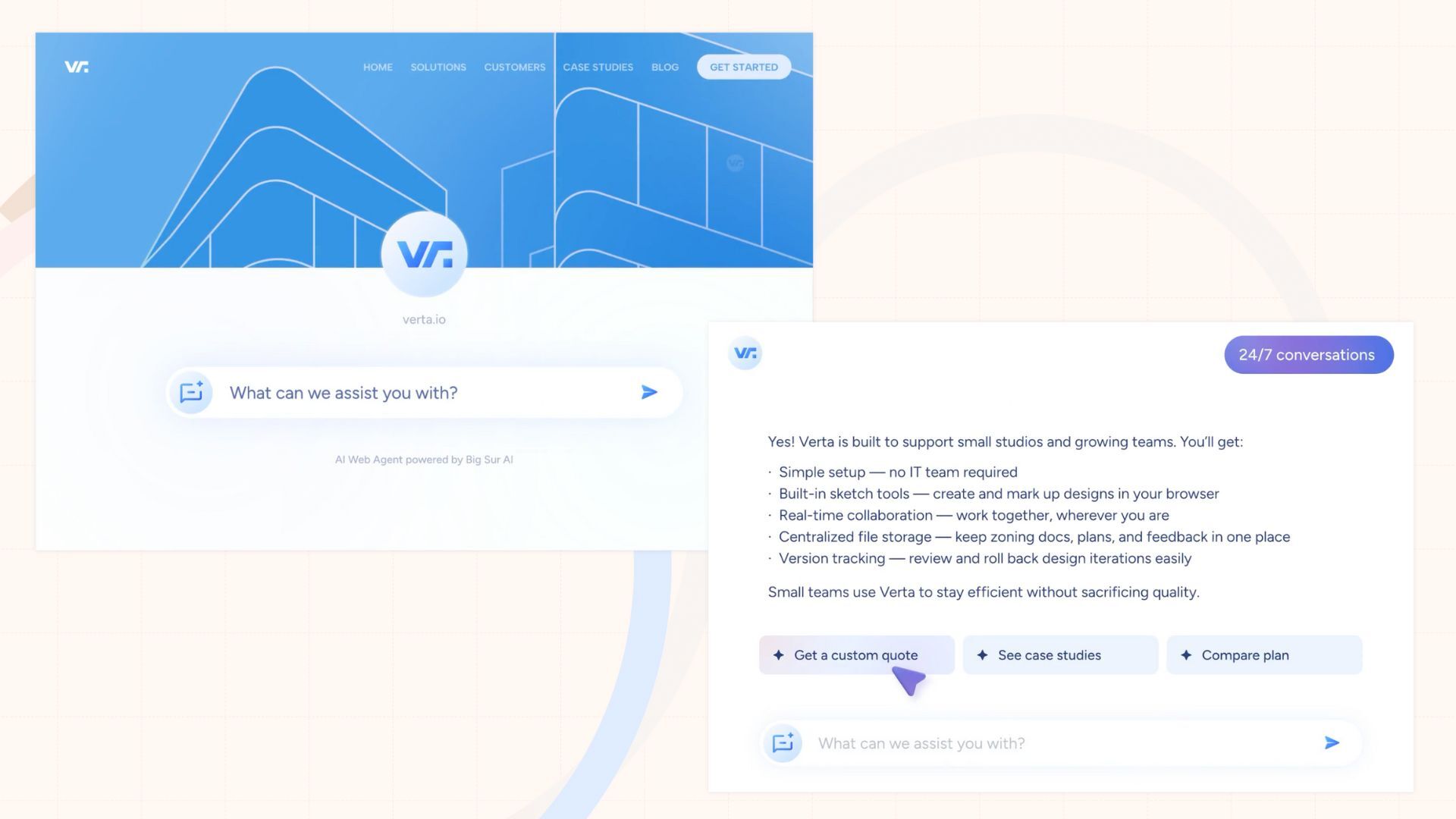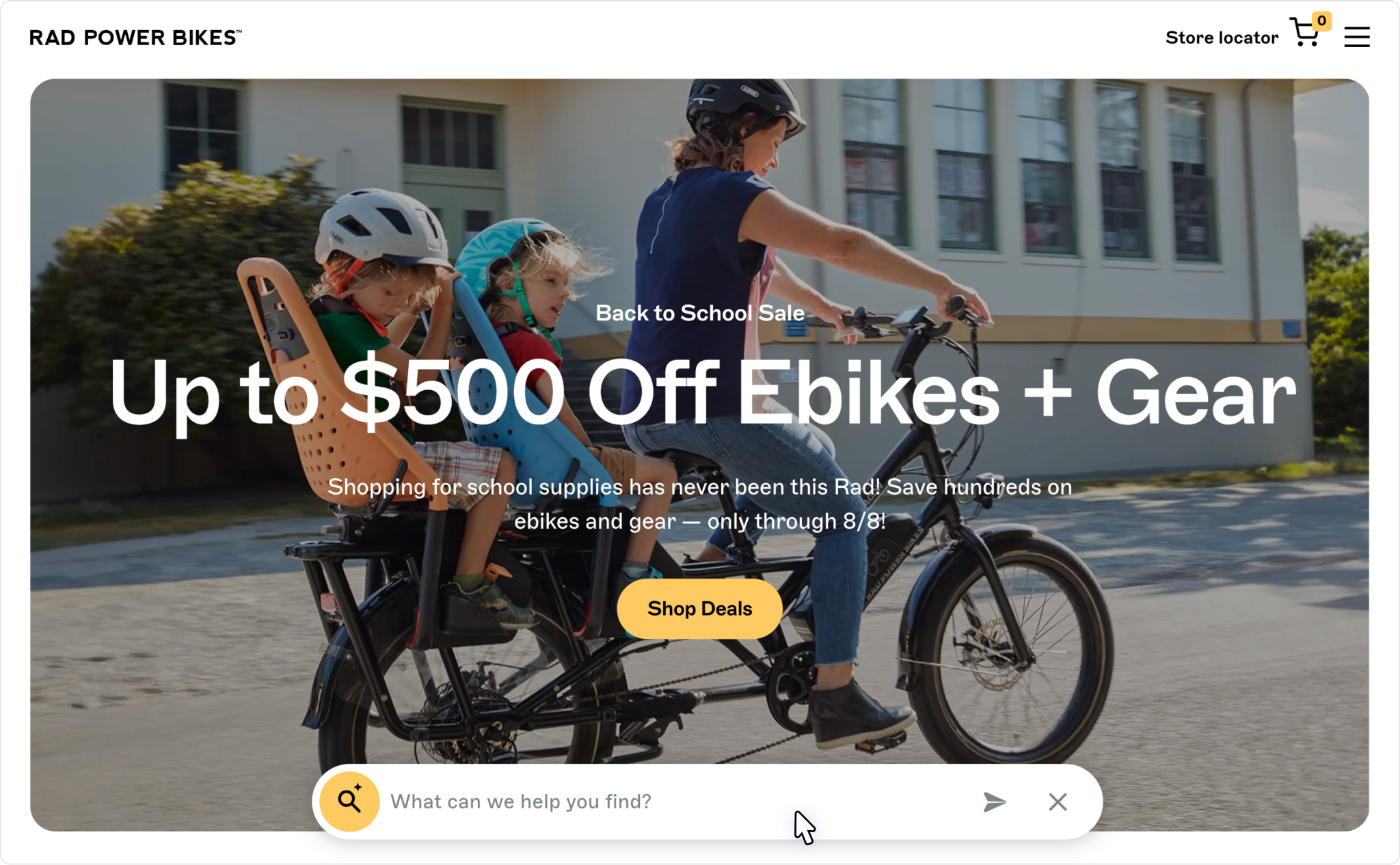AI in customer experience (CX): adoption, performance, and ROI [2025]
AI in CX in 2025
AI now underpins customer engagement across channels. Organizations deploy conversational agents for self-service, agent-assisted resolutions, knowledge automation for consistency, and personalization to increase relevance.
Most organizations use AI across services, with 80 percent deploying chatbots and 83 percent planning to increase CX AI spend. Live deployments show large gains in resolution time, containment, and agent productivity. Customers report high satisfaction when interactions are fast, accurate, and available on demand.
Stats at a glance
98%
leaders using or planning AI in engagement
80%
orgs with CX chatbots
83%
plan to increase CX AI spend
87%
resolution time reduction in a live deployment
95%
report cost and time savings
Overview table: how CX teams are rolling out AI
| Plan | Best For | Key Strength | Drawbacks | Pricing |
|---|---|---|---|---|
| Self-service virtual agent | High volume FAQs and tasks | Fast answers and 24/7 coverage | Needs clear escalation to humans | Usage-based |
| Agent assist copilot | Contact centers and help desks | Suggested replies and auto summaries | Training and workflow changes | Platform add-on |
| Knowledge automation | Policy-heavy or regulated teams | Consistent answers from vetted content | Content upkeep and evaluation | SaaS per seat |
| Personalization layer | Web, app, and messaging journeys | Contextual offers and routing | Consent and governance effort | Tiered by MAU |
| End-to-end CX AI suite | Enterprises scaling globally | Unified orchestration and guardrails | Integration and change management | Enterprise contracts |
What should business leaders do in light of these statistics?
The data points to widespread deployment and measurable improvements across speed, cost, and satisfaction. Leaders should normalize AI use across the service stack and track value as a standard operating metric.
➡️ Set quarterly adoption and value targets by channel. Start with one self-service flow and one agent assist workflow in production within 90 days.
➡️ Prioritize journeys with measurable outcomes. Target flows tied to handle time, first contact resolution, containment, and CSAT.
➡️ Publish a CX AI scorecard. Report usage, containment, average handle time, resolution time, CSAT, and deflection.
➡️ Build the data and governance layer. Define content sources, access, redaction, logging, evaluation, and escalation.
➡️ Train, instrument, and iterate. Create playbooks, prompt libraries, and QA rituals. Track regressions and bias issues.
💡 Takeaway: Treat AI as core CX infrastructure. Launch targeted workflows, measure relentlessly, and scale only when quality and safety thresholds are met.
Reality check: why some AI rollouts don’t deliver ROI
Many programs underperform when teams deploy tools without integration, training, or measurement.
Weak orchestration, poor data hygiene, and unclear ownership stall value. Anchoring rollouts to specific KPIs and building infrastructure for governance and evaluation improves ROI and durability.
Data source: Wall Street Journal
30+ statistics you need to know about (in categories)
AI adoption in CX
TL;DR → Adoption is broad and deep. Chatbots and automation anchor most CX programs, leaders are increasing budgets, and strategy is moving toward AI participating in every interaction with high containment for routine work.
- 98 percent of surveyed product and data leaders have incorporated or plan to incorporate AI in customer engagement
- More than three quarters of companies report using AI in at least one business function, including marketing, sales, and service
- 80 percent of organizations using AI for engagement have deployed chatbots
- 83 percent of service decision-makers plan to increase AI and automation investment
- Executives forecast a future where AI participates in all interactions, with high containment on routine inquiries
💡 Takeaway: Create a multi-quarter coverage plan. Expand chatbot containment by intent cluster, add agent assist for complex cases, and align spend to measurable gains in handle time, resolution time, and CSAT.
Data sources: Gartner, McKinsey, Gartner, Salesforce, Zendesk
Impact on support and resolution metrics
TL;DR → AI reduces handle time, speeds resolutions, increases autonomous containment, and improves throughput on complex work by removing routine load from agents.
- A live production deployment reduced average resolution time by 87 percent while handling thousands of daily requests
- Access to AI assistance raises issues resolved per hour by roughly 14 to 15 percent
- Chatbots can handle up to 80 percent of routine questions and tasks
- Virtual agents report about 80 percent autonomous resolution and a 52 percent reduction in time to handle complex cases
💡 Takeaway: Instrument every workflow. Track containment, average handle time, time to resolution, and handoff success. Use these metrics to decide where to expand intents and where to refine agent assist.
Data sources: Reuters, Desk365, Khoros, Business Insider via Desk365
Customer satisfaction and loyalty
TL;DR → Leaders report better service quality and significant savings with generative AI. Satisfaction is highest when experiences are fast, accurate, and available at all hours with clear escalation to humans.
- 92 percent of service leaders say generative AI improves service quality
- 95 percent report significant cost and time savings after AI adoption
- 46 percent of financial institutions using AI report improved customer experience
- 81 percent of consumers say AI is essential to modern service
- 84 percent of leisure travelers using generative AI for trip planning report satisfaction with the experience
💡 Takeaway: Pair speed with trust. Publish escalation paths, ground assistants in vetted knowledge, and monitor satisfaction by intent to ensure quality as coverage expands.
Data sources: Salesforce, Salesforce, Zendesk, Zendesk CX Trends, Zendesk
Personalization and onboarding
TL;DR → Personalization supported by AI improves loyalty and revenue. AI assistants can onboard customers, tailor content and offers, and route to the right channel with fewer touches.
- 88 percent of leading CX organizations consider personalization critical to meeting expectations
- AI-powered personalization can increase revenue by up to 15 percent
- 67 percent of consumers want AI personal assistants to handle future service queries
💡 Takeaway: Connect first-party data to CX. Introduce personalized flows in onboarding, support follow-ups, and renewal journeys, with consent and clear explanations for why content is tailored.
Data sources: Zendesk CX Trends, Desk365, Zendesk CX Trends
Consumer preferences and expectations
TL;DR → People want instant service and straightforward paths to a human for complex issues. As assistants improve, many interactions feel human-like, especially for younger cohorts.
- 51 percent of consumers prefer interacting with a bot if service is instant
- 71 percent of U.S. customers prefer to speak to a human for service needs
- 48 percent of customers say it is becoming harder to tell AI from humans in service
- 43 percent of consumers express excitement about using generative AI for customer interactions
💡 Takeaway: Design for choice. Offer fast bot service with visible escape hatches to a human, and tailor the default experience by channel and customer segment.
Data sources: Zendesk, Nextiva, Zendesk, Zendesk
ROI and business value
TL;DR → Efficiency and cost outcomes are strong. Contact center automation is projected to deliver very large labor savings, and sector analyses show substantial productivity gains and expense reductions.
- 95 percent of service decision-makers report significant cost and time savings
- Conversational AI could save about 80 billion dollars in labor costs by 2026 and fully automate a growing share of interactions
- In banking, applying AI to CX and operations can improve productivity by 3 to 5 percent and reduce expenses by roughly 300 billion dollars
- Roughly 90 percent of CX leaders report strong ROI from AI, and most plan higher investment
💡 Takeaway: Tie spend to unit economics. Report cost to serve, cost per contact, and autonomous resolution rate, and reinvest savings into data quality, evaluation, and training.
Data sources: Salesforce, NICE, Zendesk, Zendesk CX Trends, Salesforce
Final thoughts
CX organizations are standardizing on AI for self-service, agent assist, knowledge, and personalization. The fastest progress comes from launching targeted flows, instrumenting value, and growing coverage with strong governance. Teams that operationalize AI across channels will set the pace on speed, quality, and cost.
Implementation roadmap
- Define goals and KPIs
Choose one containment or handle-time KPI and one satisfaction or quality KPI per workflow. Set a 90 day review.
- Select use cases by maturity
Start with one self-service flow and one agent assist flow. Add knowledge automation and personalization as data quality improves.
- Prep data and access
Map content sources, permissions, and retention. Use vetted knowledge, redaction, and identity controls.
- Pilot and evaluate
Run A/B or holdout tests. Track adoption, value created, incident rates, and bias issues. Collect agent and customer feedback weekly.
- Govern and scale
Create playbooks, prompt libraries, and evaluation suites. Add role-based access, logging, and monitoring. Expand to adjacent channels.
FAQ: AI in CX 2024–2025
Where should CX teams start with AI?
Begin with one high-volume self-service flow and one agent assist workflow tied to handle time or containment. Measure before and after.
How should we measure ROI?
Track containment, average handle time, time to resolution, CSAT, and cost to serve. Use holdouts or phased rollouts for causal measurement.
How do we keep quality high?
Ground assistants in vetted knowledge, add human-in-the-loop review for sensitive content, and run monthly evaluation on accuracy and bias.
How should governance work?
Define owners, policies, redaction, logging, and escalation. Maintain prompt libraries and change logs. Review incidents and regressions.
What are the main risks to manage?
Over-automation without escalation, outdated content, and privacy issues. Mitigate with clear handoffs, knowledge upkeep, consent, and access controls.
Need an AI chatbot that converts website visitors?
Big Sur AI (that’s us 👋) is an AI-first chatbot assistant, personalization engine, and content marketer for websites.
Designed as AI-native from the ground up, our agents deliver deep personalization by syncing your website’s unique content and proprietary data in real time.
They interact naturally with visitors anywhere on your site, providing relevant, helpful answers that guide users toward their goals → whether that’s making a decision, finding information, or completing an action.

All you need to do is type in your URL, and your AI agent can be live in under 5 minutes ⤵️

Here’s how to give it a try:
- Sign up on Big Sur AI's Hub (link here).
- Enter your website URL. Big Sur AI will automatically analyze your site content.
- Customize your AI agent. Set up specific AI actions and decide where the AI agent will appear on your site.
- Launch and monitor. Your AI agent will be live in minutes, and you can track performance with real-time analytics.
Try Big Sur AI on your site in minutes by clicking the image below 👇


